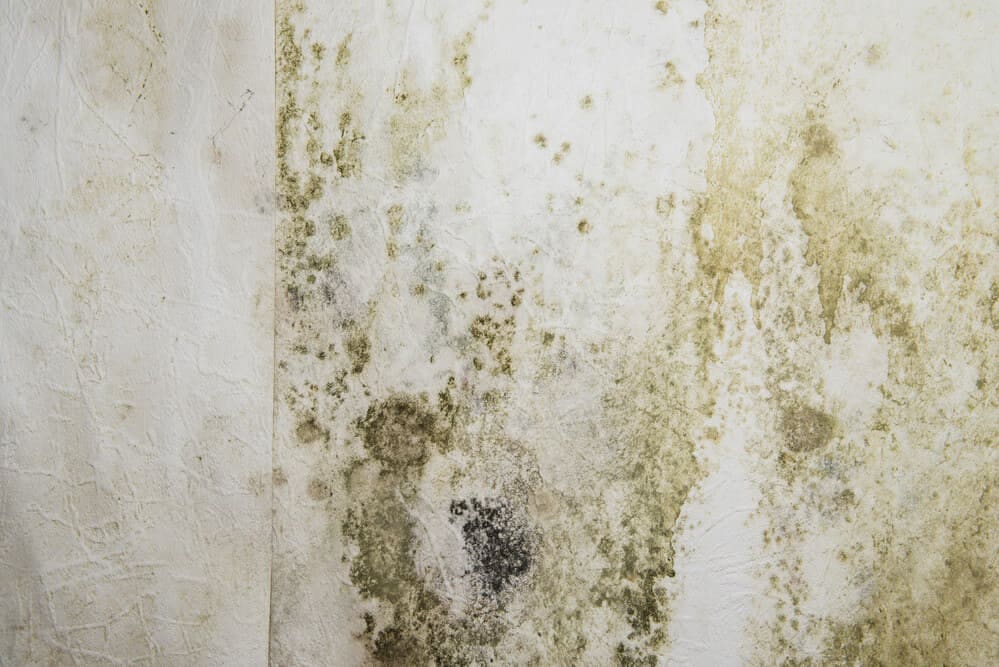BASEMENT MOLD REMOVAL & PREVENTION | Crawfordsville, IN
We specialize in basement mold removal, treatment and prevention in Crawfordsville, IN. Our mold removal experts can help identify the underlying cause of your mold problem and fix it permanently. No more constant battles every year with mold and mildew and that musty odor. We can treat and eliminate your current moldy basement problem AND keep it from happening again. Read on to learn more about how dangerous mold can be and it can be stopped in its tracks. To schedule a no-obligation site visit call or email us today!

Unfortunately, your basement environment is perfect for mold and mildew to grow. It’s dark, damp, and often has poor ventilation. Mold growth may be obvious, marked by dark or white patches visible on your walls, floors, or ceilings, or it may be hidden behind walls or under carpets. Even if you can’t see basement mold growing, you may be able to identify it by a musty smell. There are some ways to safely treat mold in your basement at home, but other times it’s better to call a professional. How to get rid of the mold in your basement depends on the type of mold and how much of it there is. If left untreated, basement mold can lead to structural damage to your home and even cause health problems for you and your family, so if you suspect mold in your basement you need to act quickly.
Excessive moisture and dampness from either ongoing water damage or a recent incident is the major cause of mold in basement Some common culprits include leaking pipes, high humidity, flash flooding, or sump pump or water heater failure. Pipes may leak because they are worn out or not properly installed. Flooding can occur because of heavy rainfall or rapid snowmelt. A sump pump failure can result in serious water damage and even small leaks in the water heater can lead to a big mold problem. If you don’t identify what’s causing the mold in your basement, even if you treat it, you won’t be able to prevent it from happening again.
Mold can impact almost all surfaces commonly found in your basement including drywall, wood, fabrics, carpeting, HVAC, and pipes and drains. Drywall and insulation are especially susceptible to mold growth after a major water incident. Wood framing, flooring, and furniture are also at risk of basement mold. If you do not properly treat and remove mold from your home’s framing or flooring, you may face a serious and expensive problem later. Fabrics on any furniture or clothing and carpeting are havens for basement mold, which is why many basements are not carpeted. Basements may flood from natural weather incidents or unexpected leaks, and carpeting is very difficult to properly dry. If mold is growing in your HVAC ducts, this takes the issue beyond the basement and is a serious problem. If you suspect mold growth in your home’s ducts contact a professional immediately. Pipes and rains are incredibly common places for mold to grow, they are damp and dark. If you have a bathroom in your basement, it may also experience more mold growth than an upstairs bathroom with better ventilation and light.
When you’ve experienced a flood or other water-related incident, basement mold and mildew can grow even after you’ve drained and dried everything up. Some types of mold may trigger minor allergic reactions while others pose a more severe threat to your family’s health and your home’s structural integrity. For example, stachysbotrys chartarum or black mold, is toxic mold and can cause breathing and sinus issues, including asthma attacks. Some types of mold will grow more localized in drywall or under carpeting. Penicillium mold can be found in insulation, furnishings, and wooden furniture and may lead to lung inflammation if left untreated. Fusarium mold needs a cold, wet environment to grow. A professional will be able to accurately identify the type of mold you suspect is in your home and treat it accordingly.
When you suspect mold and mildew growth in your basement, there are some ways to attempt to treat it at home. Some common household cleaners like white vinegar and hydrogen peroxide may do the trick. You can also mix tea tree oil or grapefruit seed extract with water. Apply your mixture of choice to the affected area. Let it sit, then wipe away with a clean cloth. Repeat as necessary. You could also use a stronger solution of borax mixed with water. Apply to the affected area with a sponge or brush; Borax does not require rinsing and can be left on the affected surface.
If you’ve found natural remedies are not enough, you can try a chemical treatment. Concrobium a non-toxic EPA-approved agent kills existing mold and growing spores, and can be used on a great variety of surfaces commonly found in basements, including wood, tile, stone, and plastic.
When at-home treatments fail, we can help get rid of basement mold. Be proactive, find the source, and treat as soon as possible for a happy and healthy home.
GET A FREE INSPECTION AND ESTIMATE
Error: Contact form not found.